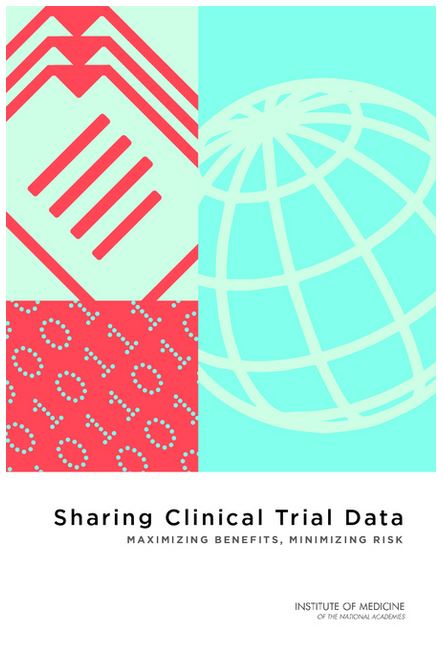 “The issue is no longer whether to share clinical trial data, but what specific data to share, at what time, and under what conditions.”
“The issue is no longer whether to share clinical trial data, but what specific data to share, at what time, and under what conditions.”
This statement from the preface of this book attests to an extraordinary change in attitudes over the last five years, and it also summarizes the main aims of the Institute of Medicine committee which compiled this report.
It begins with a statement of guiding principles and then moves through a discussion of stakeholder roles, discussion of the nature of data and its life-cycle, means of access, and the future of clinical trial data sharing in a changing landscape.
The risks of data sharing
A document of this kind is very welcome at this time of rapid change. Despite a general consensus on the desirability of data sharing, individual and institutional attitudes within industry and academe still range all the way from enthusiastic adoption to deep reluctance.
The section on the risks of data sharing lists the usual objections: re-identification of participants, issues of consent, invalid secondary analyses, and the disproportionate time and resource which might be needed to make datasets and meta-data available for use by others. As usual, there is little mention of the possibility that data holders might have anything to hide.
Radical advocates of complete data sharing may judge that the report provides escape routes by which data holders might still be able to withhold or delay material which might affect their commercial or academic interests.
The associated graphic “Clinical Trial Life Cycle: When to Share Data” is very helpful and should hang on the wall of every principal investigator.
By contrast, conservatives within industry and academe may find some recommendations threatening to commercial secrecy and the protection of intellectual property. On the whole the document is more progressive than protective.
This is especially so in its recommendations for time scales:
– Summary level data results of clinical trials (including adverse event summaries) should be made publicly available no later than 12 months after study completion.
– The ‘full data package’ should be shared no later than 18 months after study completion (unless the trial is in support of a regulatory application).
The associated graphic “Clinical Trial Life Cycle: When to Share Data” is very helpful and should hang on the wall of every principal investigator.
Assess progress in the future
Recommendations such as these, though almost impossible to enforce, at least provide a benchmark to assess progress in the future. Reporting figures from clinical.trials.gov are not reassuring. The chapter on Governance (chapter 5) is less concerned with monitoring compliance than providing safeguards for data holders.
For the sharing of data from industry trials, there are currently two main models: the Yale University Open Data Access project (YODA) which was set up in 2011, and the ClinicalStudyDataRequest.com (CSDR) which was launched by GlaxoSmithKline in 2013.
The YODA model places a ‘trusted intermediary’ between applicants and data holders. Each application is assessed on basic criteria for scientific purpose and methods and once approved; YODA acts as the data supplier without any direct interaction between the applicant and the data holder.
In the CSDR model, the Wellcome Trust convenes a panel of adjudicators to assess the validity of applications for data use, and applicants then apply directly to participating pharmaceutical companies for the data they require. The participating companies vary in their individual disclosure policies.
The beginning of discussions
It also provides a comprehensive summary of current debate in a fast developing field, and needs to be read by everyone interested in the progress of shared medical knowledge.
Although most public funders of clinical research now mandate data sharing from academic bodies, there are few structured arrangements to facilitate this. It is a very active area of discussion in the UK and the USA.
Early in the final chapter, there is the statement that “The committee intends this report to be the beginning and not the end of discussions about how to develop a responsible global ecosystem for the responsible sharing of clinical trial data.” It is an excellent start.
The book is fluently written and forms a permanently valuable source of detailed information about current regulatory mechanisms, best practice for reporting and a variety of other essential topics. It also provides a comprehensive summary of current debate in a fast developing field, and needs to be read by everyone interested in the progress of shared medical knowledge.
Comments